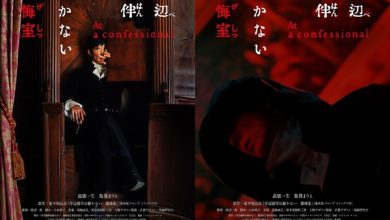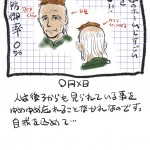No. 293 Toward the 100th Anniversary ~ Heidi, Girl of the Alps Memorial Music Collection ~

Welcome back to the I Am Anime website
It’s a belly band cat. On November 27th, we will release the 37th SOUNDTRACK PUB label, “Heidi, the Girl from the Alps Memorial Music Collection”. This is a CD album commemorating the 50th anniversary of the TV anime “Heidi, Girl of the Alps.” A 2-disc limited edition CD was released in 2008, but this time it will be a 3-disc set. This is the definitive edition that greatly complements the first commercialized sound source.
https://www.amazon.co.jp/dp/B0DM1RD7HZ
To commemorate the release, a talk event will be held at Book Cafe 20th Century in Jimbocho on November 30th. We will also be selling CDs at special prices, so please come and visit us!
For details, please see the URL below.
https://www.soundtrackpub.com/event/2024/11/20241130.html
I have previously covered the music of the TV anime “Heidi, Girl of the Alps” in this column. At that time, I mainly wrote about my musical appeal.
This time, I would like to talk about the overall picture of the music of “Heidi, Girl of the Alps”, which was revealed during the CD production process, and how the new CD differs from past products.
There is no need to explain the story of “Heidi, Girl of the Alps” in detail.
After losing her parents, when she was five years old, Heidi was left in the care of an old man (Alm Onji) who lived in the mountains of Alm. She grew up in the midst of nature with an innocent heart, and with her honest heart, she melted the hearts of the people she met. .
The first part of the story is set in the mountains of Alm and depicts the interaction with an old man and a boy named Peter, a goatherd.The second part is set in the big city of Frankfurt and depicts the friendship between a crippled girl, Clara, and Heidi. The story is divided into the third part, which takes place again in the mountains of Alm and depicts the story of Clara learning to walk again. In this article, for convenience, we will refer to these as the “Mountain of Alm Edition,” “Frankfurt Edition,” and “Reunion of Alm Edition.”
The music (BGM) for “Heidi, Girl of the Alps” has been commercialized several times in the form of records and CDs. However, although it is a well-known work, even basic information such as how many BGM songs there are and how many times it was recorded was not clear.
The BGM of “Heidi, Girl of the Alps” can be broadly divided into three categories:
(1) Original BGM
(2) Locally recorded sound source
(3) Extra music
The original BGM in (1) is music composed by Takeo Watanabe for this work. All of the music included in past music collection albums is original BGM.
(2) Locally recorded sound sources are performances of ethnic instruments and other instruments recorded in Switzerland by Takeo Watanabe and others. This includes the yodeling song that plays in the movie.
(3) Extra music is music prepared separately from the regular music, intended for use in specific scenes or episodes. Many of them are ready-made songs. For example, Mozart’s music used to describe the city of Frankfurt falls under this category.
First, let’s talk about (1) the original BGM. The manual for the 2-CD set “Heidi: Girl of the Alps Original Soundtrack (Limited Edition)” released in 2008 states that the BGM was recorded five times. There is also an M number prefixed with the number of recordings. However, I had doubts about this.
To begin with, there was something strange about the composition of the LP album “TV Original BGM Collection Heidi, Girl of the Alps,” released by Nippon Columbia in 1981. Overall, the songs are arranged according to the flow of the story, but there are times when songs that are used for the first time in the second half of the program are included at the beginning. Additionally, there is a song named “I’m Home Grandpa” that depicts the scene in which Heidi returns to Alm from Frankfurt, but that song was not actually used in that scene. The order and titles of the songs do not reflect the context in which they are used in the main story, and the composition is more like an image album.
However, that was a common occurrence in anime soundtracks from this period. This was a time when home video cameras were not yet widespread. There is no video software or video distribution. We live in a time when the only way to review the main story is to wait for it to be rebroadcast. Therefore, when compiling a music collection, I relied on my memory and audio recordings from TV. As a result, errors in composition and explanations were not uncommon. Still, I was grateful that music was being commercialized.
“Heidi, Girl of the Alps Original Soundtrack (Limited Edition)” released in 2008 basically uses the structure of “TV Original BGM Collection” as is, but adds unrecorded songs. As a result, the unnatural song order and song titles remained as they were. The total number of recordings, five times, is probably based on the assumption that the composition of the “TV Original BGM Collection” reflects the order of recording.
So, how many times was the BGM of “Heidi, Girl of the Alps” actually recorded?
In producing this CD, we conducted detailed research by referring to materials kept at Sankyo Shinsha, Takeo Watanabe’s music office. Most of the music list and score written by Takeo Watanabe remained. The recording status of the BGM that has been revealed is as follows.
First recording: December 7, 1973 Recorded approximately 25 songs
Music for the first episode.
2nd recording: December 18, 1973 Recorded approximately 40 songs
Music for “Arum no Yamahen”. Used from episode 2.
3rd recording: May 2, 1974 Recorded approximately 40 songs
Music from “Frankfurt”. Used from episode 19.
4th recording: Recorded on September 11, 1974 Approximately 20 songs
Music for “Reunion Alm”. Used from episode 38.
There are several other small-scale recordings, but the core sessions are four. It can be seen that additional recordings are being made to coincide with the timing of changes in the story’s setting.
In past products, the M number of the BGM was incorrectly written. In soundtrack research, the fact that the M number is incorrect is a major issue that undermines the foundation of the research. This is because in the world of soundtracks, there is an unspoken rule that “even if the song title changes, the M number remains the same.” This time, by comparing the music list and scores left behind by Takeo Watanabe with the sound sources, we were able to identify the correct recording times and M numbers of all the songs. For this reason alone, I think the production of this CD was significant.
Next, let’s talk about (2) the locally recorded sound source. Takeo Watanabe has visited Switzerland several times to cover music. At that time, I recorded the sounds of various ethnic instruments and songs locally. Examples include performances of European folk instruments such as hackblets (instruments that produce sound by hitting metal strings), alpenhorns, and cowbells. Part of this recording is used as BGM in the movie, but I think it was originally intended to be used as a reference for composing music. This is a valuable recording that allows you to feel the breath of Switzerland at the time.
The extra music in (3) includes Mozart’s “Divertimento in D Major” which is played in the Frankfurt version, and a hand-cranked organ piece played by a boy who plays the organ in the Frankfurt version. Due to its nature, extra music is often used only once or a few times. It would be a waste to take the time and expense to record it, so TV anime and TV dramas often use existing sound sources (records and CDs). However, in “Heidi, Girl of the Alps”, all of these songs are newly recorded. The recording session remains on the music tape, and NG takes are also recorded. In many cases, if an existing record was used, it would not be possible to record it due to copyright reasons, but since the extra music for this work is an original recording, it was possible to record it without any problems.
I would like to once again introduce the overall composition of the CD “Heidi, Girl of the Alps Memorial Music Collection,” which will be released on November 27th.
Disc 1 of the 3-CD set contains the theme song, insert songs, locally recorded sound sources, and extra music. Theme songs and insert songs are recorded in as many variations as possible, such as not only record size, but also TV size and karaoke.
The existence of locally recorded sound sources and extra music has been known for some time, but they have never been included in past music collection albums. When prioritizing the recording of songs and original BGM, special recordings inevitably end up being put on the back burner. However, this time, we have taken advantage of the fact that it is a 3-disc set, and have successfully commercialized it for the first time. This is a great achievement that reveals the whole picture of the musical world of “Heidi, Girl of the Alps.”
Discs 2 and 3 contain original BGM in a new configuration as the “BGM Collection.” All songs with remaining sound sources are included, including songs that were not included in past products. The composition is one track per song, with the exception of some short songs, and the songs are arranged in the order that follows the flow of the story. We are proud that this is an album that even avid fans of “Heidi, Girl of the Alps,” who remember famous scenes and music as a set, can listen to with ease.
See below for detailed song list.
https://www.soundtrack-lab.co.jp/products/cd/STLC060.html
A preview video is also available on YouTube.
https://youtu.be/nN1u20l8J-Q
Lastly, I would like to write about the purpose and significance of commercializing music from past works.
The author participated in an event called “Magnetic Tape Alert” held at the National Film Archive on October 5, 2024. “Magnetic Tape Alert” is an international warning that it is highly likely that tape data will not be able to be transferred (backed up) around 2025 due to deterioration of magnetic tapes and the end of production and maintenance of playback equipment. It is a warning bell. Some people may say, “No, the video tapes I recorded in the 1980s can still be played,” but what I mean here is, “I want to preserve them in a good quality that is close to the state they were in when they were recorded.” . At the event, examples were introduced of how research institutions are conducting conservation activities for data recorded on magnetic tape, etc. (see below).
https://www.nfaj.go.jp/onlineservice/mtap/
So what’s the current state of the soundtrack?
Most of the music for theater productions and TV programs from the Showa era was recorded on magnetic tape. Many of these materials have deteriorated to the point where they are difficult to recycle or have been discarded. The preservation of music tapes is left to the production company and production staff, and National Film There is no public archive organization such as a picture archive.
In fact, some of the music tapes from “Heidi, Girl of the Alps” were so deteriorated that they were difficult to play. I recorded the CD with some noise ignored. That’s because if you don’t archive it now, you may never have another chance. Of course, archived data should be carefully preserved, but if you make many copies of it as a product, there is a greater chance that it will survive for future generations.
The production and release of soundtrack albums for older works is largely aimed at the fans who watched the work. It’s for the people who are happy with it and the people who listen to it. However, I believe that it is also of great significance to preserve valuable musical heritage. The same goes for keeping accurate information such as the number of recordings and the M number, which should be helpful to those who wish to research the music of “Heidi, Girl of the Alps” in the future.
“Heidi, Girl of the Alps Memorial Music Collection” was created with the idea of preserving the music of “Heidi, Girl of the Alps” for 50 or 100 years. If many people buy our products, some of them will still be around 50 years from now. Even if physical deterioration of CDs is unavoidable, the National Diet Library is proceeding with digital archiving of CDs and paper materials, so the data should remain. Fifty years from now, in the year that marks the 100th anniversary of the broadcast of Heidi, Girl of the Alps, I will no longer be in this world. However, in the meantime, someone has taken a step forward in the music research for “Heidi, Girl of the Alps.” I hope so.
At the event on November 30th, I would like to talk while referring to the materials, including the CD commentary and things that I couldn’t write about in this column. If you are interested, please check it out.
https://www.soundtrackpub.com/event/2024/11/20241130.html



![Photo of [New Bungeiza x Anime Style vol.187] Avant-garde animation masterpiece “Kimonogatari – Koyomi Vamp”](https://www.anime-i.net/wp-content/uploads/2025/03/2585-new-bungeiza-x-anime-style-vol-187-avant-garde-animation-masterpiece-kimonogatari-koyomi-vamp.jpg)
